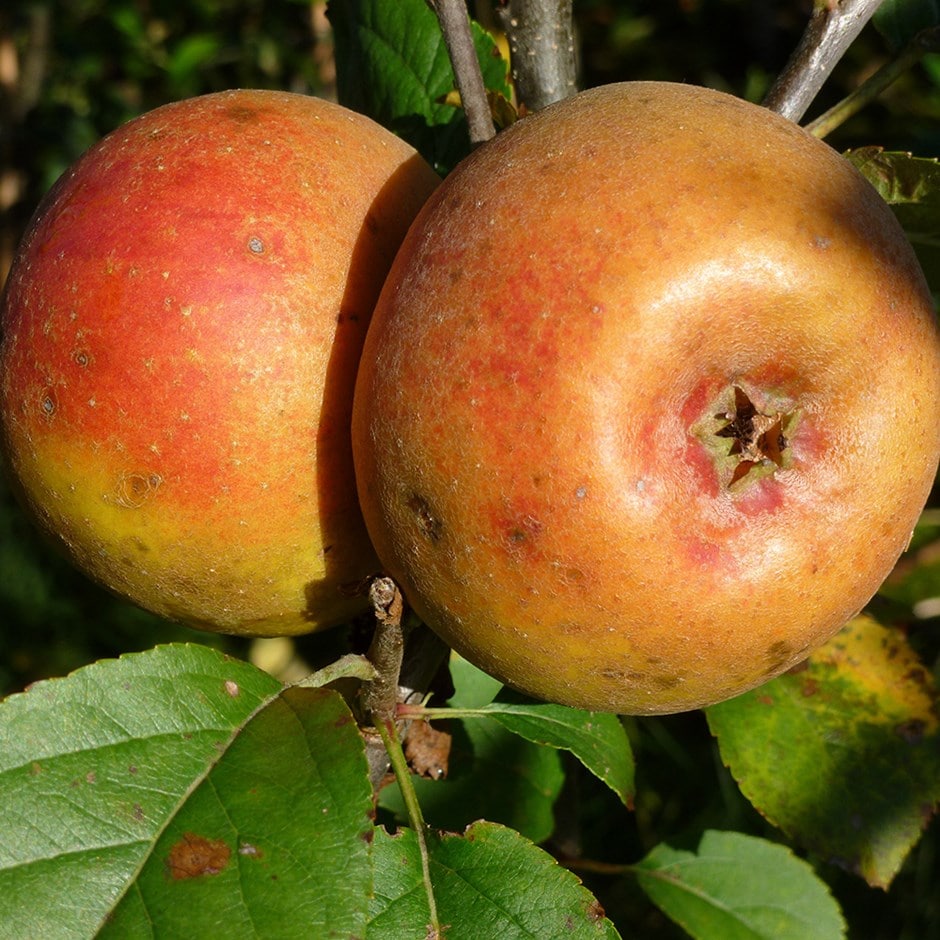apple 'Orlean's Reinette'
dual purpose eating / cooking
This tree is deciduous so it will lose all its leaves in autumn, then fresh new foliage appears again each spring.
- Position: full sun
- Soil: moderately fertile, moist but well-drained soil
- Rate of growth: average
- Flowering period: April to May
- Hardiness: fully hardy
Fancy a spice-laced baked apple still firm or fruit to crunch come winter? For historic French flavour since 1776, sample ‘Orleans Reinette’, but despite its age, this late season heritage apple remains more nouveau than nostalgic. Russet accents adorn golden skin, blushed coral and crimson, and beneath lies cream flesh - dry yet nutty, recalling almonds and warm brioche. While soft apples melt into sauce, it keeps composure and character when cooked, slices retaining shape in the oven. Pick from mid October.
Pollination information: This apple belongs to pollination group 4, and requires a pollinating partner from pollination group 3, 4 or 5 to produce a crop of apples. Popular options include: 'Kidd’s Orange Red', 'Discovery', 'Golden Delicious', and 'Charles Ross'.
Pollination information: This apple belongs to pollination group 4, and requires a pollinating partner from pollination group 3, 4 or 5 to produce a crop of apples. Popular options include: 'Kidd’s Orange Red', 'Discovery', 'Golden Delicious', and 'Charles Ross'.
When planting your apple tree, prepare a hole up to three times the diameter of its root system. Fork over the base of the pit in readiness, incorporating plenty of organic matter into the backfill and planting hole. Avoiding frozen and waterlogged soil, trees should be planted out as they arrive. If you've ordered a bare root tree, soak the roots in a bucket of water for half an hour prior to planting - or if this is not possible, they can be heeled in temporarily, covering their roots with soil, or potted up. Once in the ground, stake firmly and keep the base weed-free. Apply a balanced fertiliser in early spring to support growth and fruiting and provide regular watering during hot, dry spells. The main winter prune, avoiding frosty conditions, involves removing dead, dying, and diseased wood to create an open crown. Additionally, reduce leaders and laterals by a third to establish an airy structure without crisscrossing branches. In August, summer prune by shortening side shoots longer than 20cm (8”) back to three leaves, promoting fruit ripening and encouraging more fruit buds.

